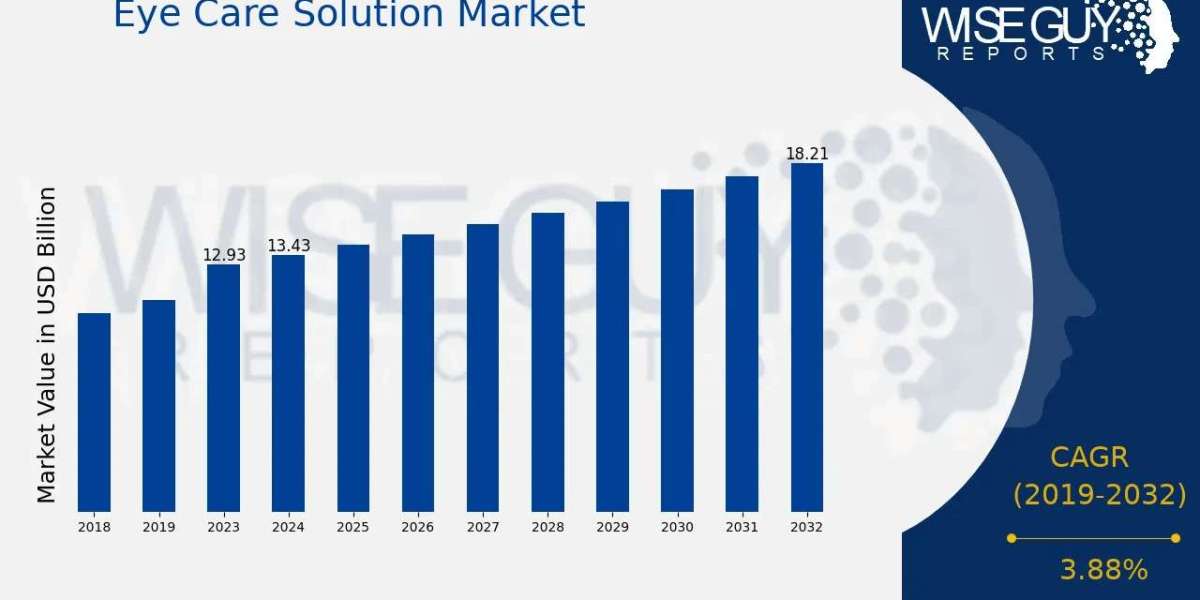Telemedicine Revolutionizing Eye Care: How Virtual Consultations Are Improving Access to Vision Health
In recent years, telemedicine has become an integral part of healthcare, offering a more accessible and efficient way for patients to receive medical care remotely. In the field of eye care, virtual consultations are revolutionizing how patients interact with ophthalmologists and optometrists, making eye health services more accessible, affordable, and convenient for people around the globe.
Telemedicine in eye care allows individuals to seek advice, diagnosis, and treatment for a wide variety of vision-related problems without needing to visit a physical clinic. Through digital platforms, patients can now consult with eye care professionals via video calls, share images of their eyes, or even send detailed photographs of their eye conditions for remote analysis. This shift in the healthcare paradigm is improving access to quality care, particularly for those living in rural or underserved areas.
Breaking Down Barriers to Access
One of the most significant challenges facing the global healthcare system is ensuring equal access to quality medical services. For those living in remote areas or underdeveloped regions, access to specialists, including eye care professionals, can be limited. Traditional visits to ophthalmologists or optometrists require travel, waiting times, and sometimes long-distance appointments. With telemedicine, these barriers are significantly reduced.
Virtual consultations enable patients to consult with doctors from the comfort of their homes, saving both time and money. Whether it's a routine check-up or addressing a specific eye issue, patients no longer need to take long trips to the nearest clinic, making eye care more accessible to people living in underserved regions, or those with mobility challenges.
This accessibility is not only improving patient care but also facilitating early detection. Through telemedicine platforms, patients can perform self-assessments or undergo screening tests, which are then reviewed by eye care specialists. Catching eye conditions early, such as glaucoma, diabetic retinopathy, and cataracts, is crucial to prevent vision loss. These proactive approaches are saving patients from potentially life-changing complications, and the ability to monitor eye health remotely provides a significant advantage in maintaining regular care.
Convenience for Patients and Eye Care Providers
Telemedicine’s growing popularity is also due to its unmatched convenience. Patients can now book and attend consultations from anywhere at any time, which is particularly important for those with busy schedules. Virtual consultations eliminate the need for travel, waiting rooms, and in-person visits, which often cause long delays. It offers convenience, flexibility, and more timely responses for patients.
For healthcare providers, virtual consultations allow for a streamlined approach to managing their practice. Physicians can assess multiple patients in a shorter amount of time, increasing overall efficiency. Virtual consultations also create an opportunity to reach a broader patient demographic, especially those in remote or isolated communities. For example, an optometrist in a city can easily consult with someone in a rural village who may otherwise not have access to a specialized eye care provider. Additionally, telemedicine offers doctors more flexibility in scheduling, allowing them to dedicate time to high-priority or complex cases while managing basic consultations remotely.
Role of Technology in Eye Care Virtual Consultations
Advancements in technology are driving the success of telemedicine in the eye care sector. Many telemedicine platforms now incorporate cutting-edge diagnostic tools, such as AI-based image analysis, which helps doctors assess patient conditions more accurately. AI systems can analyze eye images, such as retina scans or photographs of the cornea, to detect signs of disease such as macular degeneration, diabetic retinopathy, or retinal tears. These tools not only enhance the diagnostic process but also improve the precision of recommendations for treatment.
Furthermore, the rise of wearable devices and smart technologies is making virtual eye care consultations even more advanced. Devices like portable retinal cameras, home testing kits, and ocular pressure monitors can send real-time data to eye care professionals, allowing them to remotely track a patient's eye health progress. For patients with chronic conditions like glaucoma, regular monitoring can be done from the comfort of their own homes, helping doctors make better-informed decisions.
Overcoming Challenges in Virtual Eye Care
While telemedicine offers numerous benefits, there are still challenges to overcome. For one, not all patients have access to the necessary technology, such as smartphones, high-speed internet, or appropriate devices for sharing medical images. In many developing countries or lower-income households, this digital divide limits the reach of telemedicine solutions.
Additionally, there may be limitations in diagnosing certain conditions through virtual consultations alone. Although AI and diagnostic tools are advancing rapidly, there are still instances where an in-person visit or specialized examination is required. For example, the physical examination of the eye, such as measuring intraocular pressure or conducting certain tests, may not be feasible remotely.
To overcome these challenges, healthcare providers and governments must continue to invest in infrastructure and education to ensure that all patients have access to the technology they need for virtual eye care consultations.
The Future of Telemedicine in Eye Care
Looking ahead, telemedicine will continue to play a key role in improving access to eye care services. As technology continues to evolve, the potential for remote eye care solutions will grow even further, enhancing the quality of care patients receive while reducing barriers to treatment. Artificial intelligence, improved imaging technologies, and more sophisticated diagnostic tools will further transform virtual eye care consultations.
Telemedicine in eye care has proven to be a powerful tool in enhancing accessibility, efficiency, and convenience for both patients and healthcare providers. With ongoing advancements in technology, telemedicine will continue to be an essential component of the eye care solution market, paving the way for a more inclusive, efficient, and patient-centered healthcare system.
Blog Topic 2: Eyewear and Contacts in 2025: What’s Driving the Surge in Demand for Vision Correction Solutions?
The global eyewear and contact lens market is experiencing a rapid surge in demand as we move toward 2025. As eye care becomes a growing concern for an increasing number of people, both young and old, the demand for effective and convenient vision correction solutions has never been higher. Eyewear and contacts are no longer just about correcting vision; they have become an essential part of daily life, fashion, and well-being.
Factors Driving the Surge in Demand
- Rising Incidence of Vision Disorders
One of the main drivers of the growing demand for eyewear and contact lenses is the increasing prevalence of vision problems. Conditions like myopia (nearsightedness) and presbyopia (age-related farsightedness) are becoming more common, largely due to modern lifestyles. With more people spending extended hours in front of digital screens, the increase in digital eye strain is leading to a greater need for corrective lenses. According to recent studies, nearly 50% of the global population will be myopic by 2050, and the demand for corrective eyewear will continue to rise.
- Advancements in Eyewear Technology
The eyewear market is also benefiting from technological advancements. Innovations such as blue light-blocking lenses, anti-glare coatings, and smart eyewear are becoming increasingly popular. Smart glasses, which incorporate augmented reality (AR) and other digital features, are gaining traction as a stylish and functional accessory. These advancements are attracting a wider range of consumers, especially tech-savvy individuals seeking multifunctional eyewear.
- Aging Global Population
As the global population ages, there is a rising need for corrective solutions like reading glasses, bifocals, and contact lenses. Older adults are more likely to experience presbyopia and other age-related vision problems, which in turn fuels the demand for eyewear and lenses. Additionally, with an aging population comes an increased awareness of the importance of eye health, driving further growth in the eyewear and contacts market.
- Changing Fashion Trends
Eyewear has evolved beyond its traditional role of simply correcting vision. Today, glasses are considered a fashion accessory, with countless frame styles, colors, and designs to choose from. As eyewear has become an essential part of personal style, more individuals are opting for stylish frames to enhance their overall look. This shift in consumer perception is contributing to the booming demand for eyewear, as people purchase multiple pairs to match different outfits and occasions.
The Growing Popularity of Contact Lenses
Contact lenses are also gaining significant popularity as an alternative to traditional glasses. The growing demand for contact lenses can be attributed to several factors:
- Convenience and Comfort
Contact lenses offer unparalleled convenience and comfort for many individuals. They are particularly popular among those who lead an active lifestyle, such as athletes, who find glasses cumbersome during physical activities. Additionally, advancements in contact lens materials have led to lenses that are more breathable, comfortable, and longer-lasting, making them an attractive option for many.
- Cosmetic and Aesthetic Benefits
Many people prefer contact lenses because they offer a more natural appearance. They eliminate the need for bulky glasses and provide a wider field of vision, as there are no frames obstructing peripheral sight. Cosmetic reasons, including the ability to change eye color or enhance one’s appearance, have also contributed to the growing popularity of contact lenses.
The Future of Eyewear and Contacts
Looking ahead, the eyewear and contacts market will continue to evolve. Innovations in lens technology, such as the development of advanced 3D-printed frames and personalized lenses, will further expand consumer options. The demand for eyewear and contacts will also increase as people become more aware of eye health and the impact of digital screen use on vision.
As the eyewear and contact lens market grows, companies will continue to cater to evolving consumer needs, offering a wider variety of products that balance function, fashion, and affordability. The future of vision correction solutions looks brighter than ever, with exciting new developments on the horizon.














